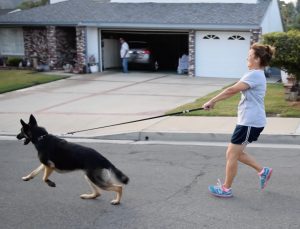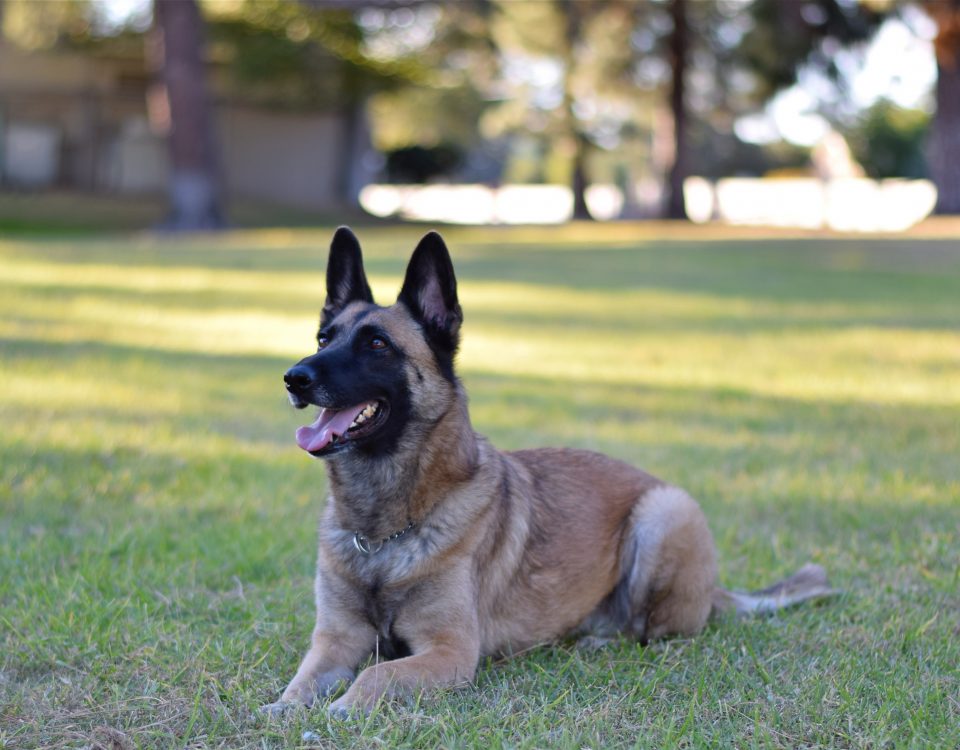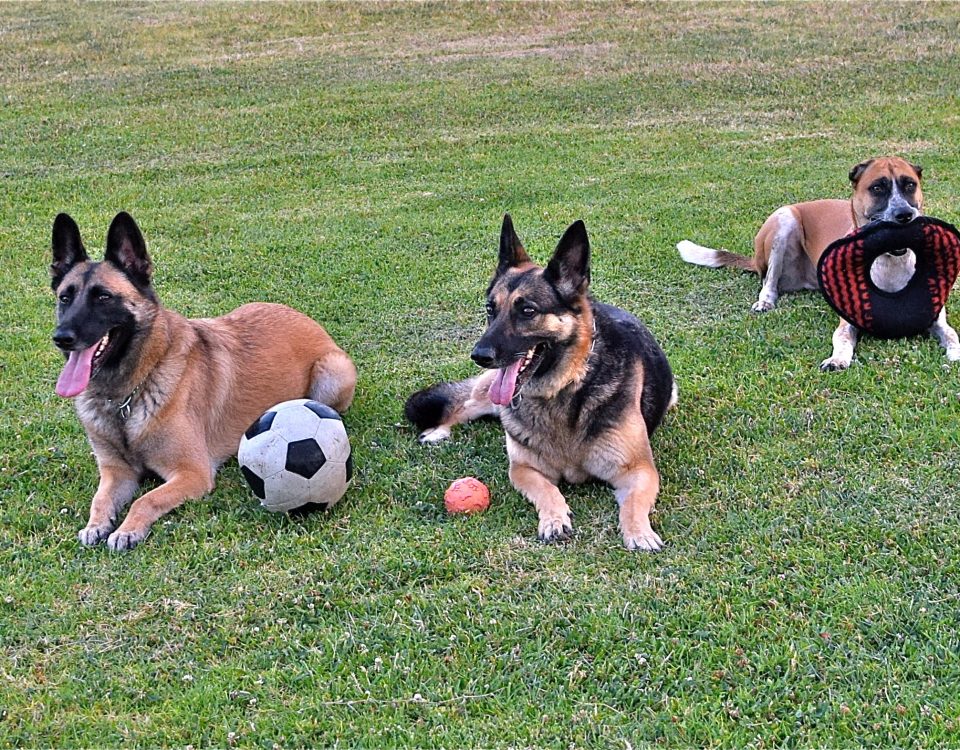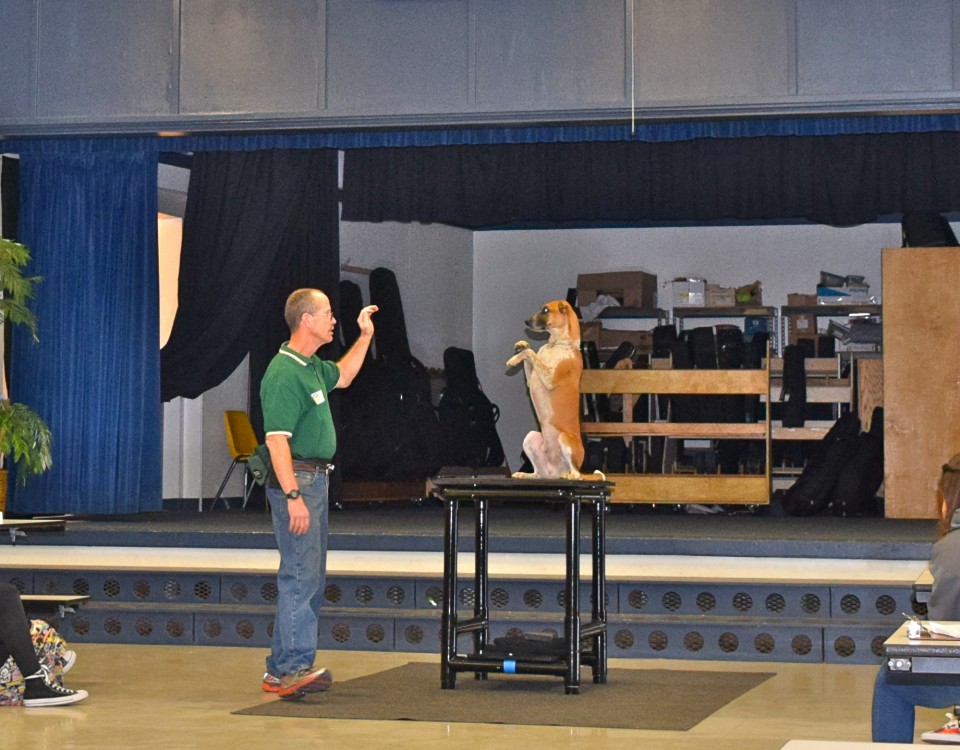Restraint – The Big Enemy of Training

Restraint – The Big Enemy of Training
There are many things that can be done – or not done – that will cause the training of a dog to fail. Some of these things are easily recognized and understood such as neglecting to give the dog any exercise or attention. Other causes of failure are a little harder to see. Having a dog with a temperament that is very different from what the owner expects or using a training system that does not address correct leadership or behavior around distractions are other examples. But restraint? What does that even mean?
Try this experiment. Find a teenager with a lot of energy and a competitive spirit (kind of like most young dogs). Then have the teen stand on one side of a see-through fence, such as chain link, with you on the other side. Hand the teen one end of a strong leash by passing it through the fence a bit above waist level. You hold the other end. Then give your assistant just one instruction, “No matter what, do not let go of the leash.”
Then, without saying one word, gradually start pulling on the leash. If you keep pulling harder and harder, you will end up in a tug-of-war. Your teen will be “high in drive” and doing everything possible to win.
What does this have to do with dog training? In a word, everything! When you started to pull, your helper started pulling. As you pulled harder, so did your helper. It was automatic. You might say that it was because you told your helper not to let go. True. However, what was a thought for your helper (you said not to let go) is an instinct for a dog. And for the purpose of this article, an instinct is an automatic pattern of behavior exhibited in response to stimulation. Instinct does not require thought. The behavior just happens.
This one concept is responsible for much of the undesirable behavior seen in a great majority of untrained dogs as well as many dogs that have already had some level of training. Restraint is also responsible for much of the aggressive behavior seen in dogs.
Restraint, especially in the face of distraction, stimulates and increases drive in the dog.
Let us now look at this form of “negative training” a little more closely. As we do, we will see how our experiment with the energetic teen mimics dog behavior when the dog is subjected to restraint. First, we will define restraint. Simply put, restraint is anything that pulls at, holds back, blocks, or prevents a dog from doing something that he wants to do, or going somewhere that he wants to go, especially if something has captured his attention (a distraction). We will explore the two most common causes of restraint and explain the progression that usually follows.
Example 1 – the walk: On his daily walk, Rover is interested in everything he sees. As he passes a certain house, he notices a dog on the other side of a fence at the top of the driveway. The dog barks at him. Wanting to investigate, he pulls toward the dog, but the leash keeps him from getting to his desired destination. He is being restrained. In a few moments, he is past the distraction, and the walk continues. The next day he goes by the same house and sees the same barking dog. He really wants to investigate, but again the leash restrains him. Frustrated and stimulated in his drives, he pulls harder this time, answering the barking dog with some barking of his own. Despite his efforts, he still is unable to get to the other dog.
As the days and weeks go by, Rover is constantly frustrated in his attempts to check out the other dog, and since restraint (the leash holding him back) is a natural stimulant to drive, he starts to get a little crazy with his pulling (remember your experiment with the teen). He tries harder and harder. Eventually, he will begin to act aggressively toward the dog behind the fence or any other dog he sees on the walk. Soon his behavior causes his owner to stop taking him on walks.
Example 2 – behind the fence: Rocky has a lot of energy and spends most of his day in the back yard. He is interested in everything that he sees, especially things he sees through the chain link fence at the top of the driveway that looks to the street. One day he sees a dog that is being walked by his house. Wanting to investigate, but held back by the fence, he barks at the other dog. The fence is restraining him. The dog keeps going and is soon gone. The next day the same dog walks by. Again, he barks, and this time the dog barks back. He really wants to investigate, but the fence still restrains him. Frustrated and stimulated in his drives, he jumps up on the fence and barks some more. Still no success. He can’t get to the other dog.
As the days and weeks go by, Rocky is constantly frustrated in his attempts to check out the other dog, and since restraint (the fence blocking his attempts) is a natural stimulant to drive, he starts to get a little crazy with his behavior at the fence (remember your experiment at the fence with your teen). He tries harder and harder. Eventually, he begins to act aggressively toward anything that goes by his house. His owners, who are rarely home, discount the neighbor’s claim that Rocky is becoming aggressive.
These two examples are very similar and so is the progression.
- Continued restraint in the face of distraction increases drive.
- Unfulfilled drive leads to frustration.
- Continued frustration eventually leads to aggression. (see article ”How do you define a dog’s temperament?”)
Many things other than the two examples just given can cause restraint that leads to unwanted behavior. For the dog in the yard, it can be a cat sitting on the top of the wall, birds and squirrels on the power lines (gravity restrains the dog as it leaps to get the ‘prey’), and neighbor dogs wanting to fight through the fence. For the inside dog, it can be people passing by the house that can be seen through the front window, delivery people at the front door, or someone coming into the house as the owner holds the dog back.
Obedience training will not have satisfactory results if the dog spends a majority of his time having the environment provide the stimulations that trigger unwanted behavior. If you think about it, almost every distraction that a dog is exposed to during the course of the day involves some kind of restraint. The dog wants to involve himself in whatever is distracting him, but something keeps him from doing so. The inevitable result is a frustrated dog that is totally dominated by the distractions that he is exposed to. Remember, this unwanted behavior can develop right in front of you as you walk your dog and allow him to respond to distractions by pulling on the leash. Every time this happens, it just reinforces a behavior pattern that will become more and more difficult to undo.
First, good obedience training looks at the whole day and does its best to minimize how much stimulation the dog is exposed to in an uncontrolled way. Secondly, good training does its best to maximize how much the dog does in a structured and productive way (see article “My philosophy on training a dog”). When the 24-hour day is correctly structured and obedience training is seen as an overall picture, then your dog will be able to flourish and become the best that he can be.





